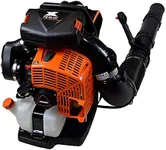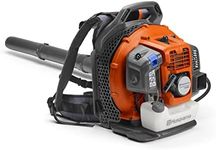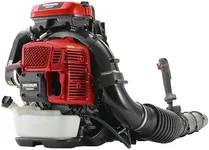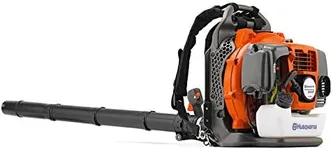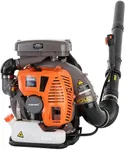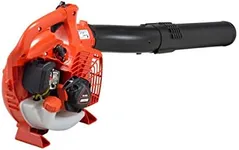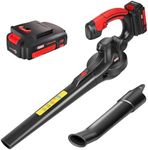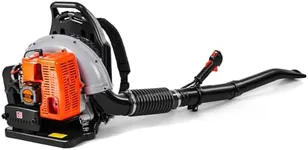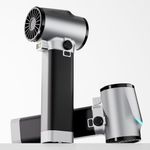Buying Guide for the Best Gas Leaf Blowers
Choosing the right gas leaf blower can make yard work much easier and more efficient. Gas leaf blowers are powerful tools that can handle large areas and heavy debris, but selecting the right one involves understanding several key specifications. By knowing what to look for, you can find a model that fits your needs and makes your outdoor maintenance tasks more manageable.Engine PowerEngine power in gas leaf blowers is measured in cubic centimeters (cc). This spec is important because it determines the blower's ability to move leaves and debris. Generally, the higher the cc, the more powerful the blower. For small yards or light tasks, an engine with 20-30cc might be sufficient. For larger areas or heavy-duty tasks, you might need a blower with 40cc or more. Consider the size of your yard and the type of debris you need to clear when choosing the engine power.
Air Volume (CFM)Air volume, measured in cubic feet per minute (CFM), indicates how much air the blower can move. This spec is crucial because it affects how quickly and efficiently you can clear an area. Lower CFM (around 200-300) is suitable for small yards and light debris. Medium CFM (300-500) is good for average-sized yards with moderate debris. High CFM (500+) is ideal for large areas and heavy debris. Match the CFM to the size of your yard and the amount of debris you typically encounter.
Air Speed (MPH)Air speed, measured in miles per hour (MPH), shows how fast the air is moving out of the blower. This spec is important for moving heavier debris like wet leaves or small branches. Lower air speeds (100-150 MPH) are fine for light, dry leaves. Medium air speeds (150-200 MPH) work well for most residential tasks. Higher air speeds (200+ MPH) are best for heavy, wet debris or professional use. Consider the type of debris you need to move when evaluating air speed.
WeightThe weight of the gas leaf blower affects how easy it is to handle and use for extended periods. Lighter models (under 10 pounds) are easier to maneuver and are suitable for small to medium tasks. Medium-weight models (10-15 pounds) offer a balance between power and ease of use. Heavier models (15+ pounds) are more powerful but can be tiring to use for long periods. Think about your physical strength and how long you will be using the blower when considering the weight.
Noise LevelNoise level, measured in decibels (dB), is an important consideration, especially if you live in a neighborhood with noise restrictions or if you are sensitive to loud sounds. Lower noise levels (under 70 dB) are quieter and more suitable for residential areas. Medium noise levels (70-85 dB) are common for most gas leaf blowers and are acceptable in many areas. Higher noise levels (85+ dB) are very loud and may require hearing protection. Check local regulations and your personal comfort with noise when choosing a blower.
Fuel Tank CapacityFuel tank capacity determines how long the blower can run before needing a refill. Smaller tanks (under 15 ounces) are lighter but require more frequent refills. Medium tanks (15-25 ounces) offer a good balance between weight and runtime. Larger tanks (25+ ounces) allow for longer use but add to the overall weight. Consider how long you need to use the blower in one session and how comfortable you are with refueling when choosing the fuel tank capacity.
Vibration ReductionVibration reduction features help minimize the physical strain of using the blower. This spec is important for comfort and reducing fatigue during extended use. Basic models may have minimal vibration reduction, which is fine for short tasks. Mid-range models often include some vibration dampening, making them more comfortable for moderate use. High-end models typically have advanced vibration reduction, ideal for long periods of use. Think about how long you will be using the blower and your comfort level when considering this feature.
